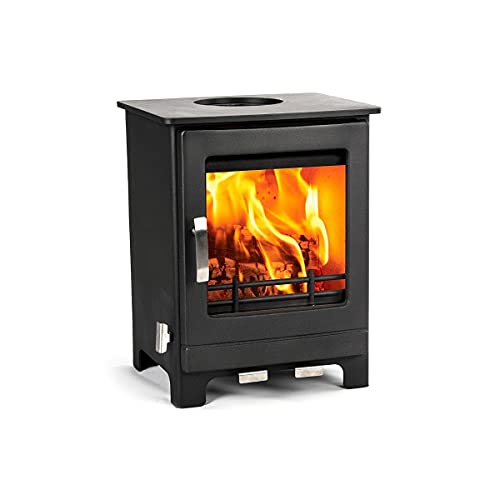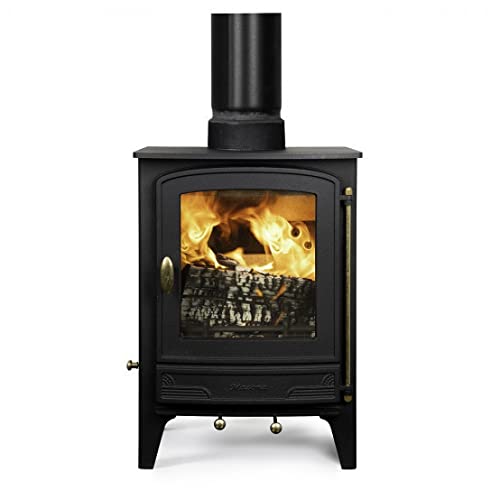Small Multi Fuel Stoves For Sale
 Small multi fuel stoves for sale let you enjoy the convenience of burning multiple types of smokeless fuels. They are also Versatile NRG Defra Fireplace: Portable MultiFuel Cast Iron and can be utilized in a wide variety of rooms and home decors.
Small multi fuel stoves for sale let you enjoy the convenience of burning multiple types of smokeless fuels. They are also Versatile NRG Defra Fireplace: Portable MultiFuel Cast Iron and can be utilized in a wide variety of rooms and home decors.
 If you live in an area designated as a Smoke Control Area you should consider an DEFRA approved stove, such as the Stovax Stockton 5, to legally burn wood and other non-smokeless fuels.
If you live in an area designated as a Smoke Control Area you should consider an DEFRA approved stove, such as the Stovax Stockton 5, to legally burn wood and other non-smokeless fuels.
Canister Stoves
Canister stoves use fuel stored in sealed canisters including propane, isobutane or Www.Fireplacesandstove.com a mix of the two. The most well-known backpacking stove is the canister stove, which offers a competitive fuel efficiency as well as a simple operation. They are a great choice for summertime trips and trips which require you to keep the weight of your backpack at a minimum or for those looking for an easy system. However, they are not as effective in harsh winter conditions and aren’t the best choice for high-altitude expeditions.
Certain canister-fuel systems like the Jetboil MiniMo System or MSR WindBurner System come with an integrated design that attaches directly to the fuel canister. This creates an extremely compact and lightweight system. This can save space however, it also opens the canister to the elements. It’s less resistant to windy conditions. Soto’s non-integrated WindMaster stove however provides a more durable pot support system that keeps the canister closer to the burner for better heat control in windy conditions.
Many stoves with canisters struggle in cold temperatures. As the temperature decreases, so does the pressure in the canister which can lead to problems or even failure. The MiniMo pressure regulator combats this issue, delivering steady heating even at temperatures that are subfreezing.
Liquid-fuel stoves use an additional, refillable fuel bottle and have a much wider range of usability. They can use white gas, isobutane/propane blends, Kerosene, and some even utilize gasoline that isn’t leaded (the MSR WhisperLite International is an excellent example). These models are great for backpackers who will be in remote areas where it may be difficult to locate fuel canisters that have been prefilled.
Some backpackers choose wood-burning appliances that are efficient in terms of energy consumption, but add a significant amount to your backpack’s weight and bulk. You can also find a variety of stoves for backpacking that are self-contained and use wood or other biomass to provide fuel, such as the Solo Stove Lite above. These stoves are best suited for backpacking trips with fewer people and don’t provide the same level of convenience as a canister or liquid fuel system.
Liquid Fuel Stoves
In contrast to canister stoves, liquid multi-fuel stoves that burn fuel utilize a pump to maintain pressure in the fuel bottle and push it into a small nozzle to be burned. They are more for cold weather camping and hiking and can be used in subfreezing temperatures. They can also be filled much more quickly than canisters, since you can simply open the lid and add more. White gas is the fuel used in the majority of stoves that use liquid fuel. It is a highly refined gasoline that has very little or none impurities. It burns hot and clean even when temperatures are below freezing. Some stoves can also run on cheaper cleaner fuels such as diesel or kerosene.
The downside to these stoves is that they tend to be heavier than canister stoves and have a lot of parts and moving parts that require to be cleaned or primed in time. In a windy climate they may be more difficult to use because the pumping action can cause the flames to flicker or smoke. A lot of them require a priming process that involves heating up a small amount of fuel in a cup under the burner. This transforms the liquid fuel into a gas.
Liquid fuel stoves are able to function in frigid temperatures, as do stoves that are based on canisters. They also tend to be more stable than stoves made of canisters since they are lower to the ground and have broader stove legs that function as stable platforms. Some are as stable and multifuel as Trangia stoves X2 and can be used with the original Trangia burner if you have an Trangia adaptor.
Some models include a shaker jet, similar to MSR, which is better suited to the igniting of white gases. These stoves are also great for international travel, where canister fuel and even outdoor supply stores can be difficult to locate. There are many excellent, lightweight, easy to use liquid fuel stoves on the market. The Kovea Hydra is one of the best.
Gas Stoves
Gas stoves are a common feature of American cooking. It’s difficult to find a home in the US without one, and they are well-known for several reasons. They heat quickly, use natural gas (typically cheaper than electricity) to generate energy and don’t require special installation or venting.
Scientists are becoming more concerned about the emissions that gas stoves emit. Gas stoves release carbon monoxide, formaldehyde, and nitrogen dioxide at levels that are higher than EPA guidelines. These gases are linked to a myriad of health problems, including lung infections, learning difficulties and a higher risk for childhood asthma. Even when not operating, they release methane which is a greenhouse gas that is considered more powerful than carbon dioxide, but doesn’t hang around in the atmosphere as long.
The commotion has sparked debate over whether or not gas stoves should be banned, and lawmakers have weighed in on the subject. A group of Republican Senators have proposed two bills to stop the CPSC ban on gas stoves. House Republicans passed legislation to protect the right of consumers to choose the kitchen appliance they want.
In the meantime, a few homeowners are considering switching from gas to electric or even adjusting their current stoves to limit harmful emissions. However, others are reluctant to part with their favorite kitchen gadget. Here’s what you need to be aware of the dangers associated with these stoves.
The emissions of a stove are influenced by the type of food that is being cooked and the temperature setting, but they still produce an impressive amount of nitrogen oxide when operating. According to a study carried out by the Rocky Mountain Institute, Physicians for Social Responsibility and Mothers Out Front in 2020, boiling water or baking cake in a gas-powered oven can produce NO2 levels that exceed the standards for outdoor air. However, roasting a chicken using high flame settings could send those numbers skyrocketing.
If you’re looking at cutting down on your carbon footprint it’s essential to purchase stoves that have an efficient design and follow a few simple energy-saving tips. Keep your burners clean, for example to ensure that they function as efficiently as they can. It’s also an ideal idea to only use the burners you need to, since the excessive use of them can waste up to 40 percent of their power.
Portable Stoves
A small stove is a great accessory to your camping gear particularly when you’re on the move. They can assist you in cooking and keep hydrated while hiking, cycling or backpacking. Stoves are powered by a variety fuel sources like charcoal, wood, propane and gas. The cost of the stove will depend on the fuel source, as well as the amount of energy it consumes and its efficiency.
Small multifuel stoves are very affordable, especially if you choose one that uses propane or natural gas. They can also be extremely efficient, consuming a less fuel than other types require to produce the same amount of heat. Gas stoves typically have a wider cooking footprint than other models which allows you to fit two large-diameter pans or pots side-by-side.
Although you may think a butane burner is expensive They are a great alternative in situations of emergency where electricity isn’t available. Its small size and light weight make it easy to store and transport. It is also a fast-heating model, which means you can start cooking your food right away.
In areas that are remote in the middle of nowhere, it might be difficult to locate liquid fuel stoves. Usually, they are self-pressurized and do not need a pump. However, you might need to refill them once you’ve used them. The flame strength is adjustable which means you can cook without reducing the amount of heat produced.
Solid fuel stoves are simple to operate and light however they’re not the best choice for windy or rainy weather. Solid stoves that burn fuel are more smelly and require Esbit tabs for fuel.
A wood-burning stove has been popular in recent years because it uses an easily accessible and renewable fuel source. However, they are limited in flame and heat control and are subject to fire bans in certain areas. They must also be maintained with care to avoid creosote buildup and flammability problems. Be sure to adhere to the height and clearance requirements. Also, ensure that you have a safe method to get rid of smoke and ash.
